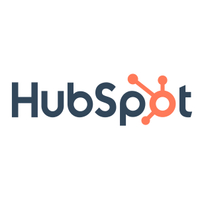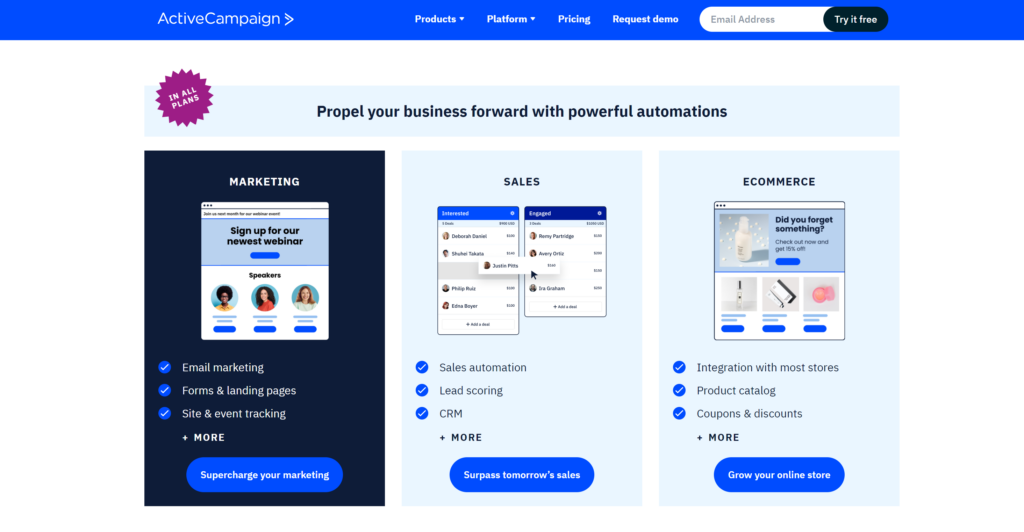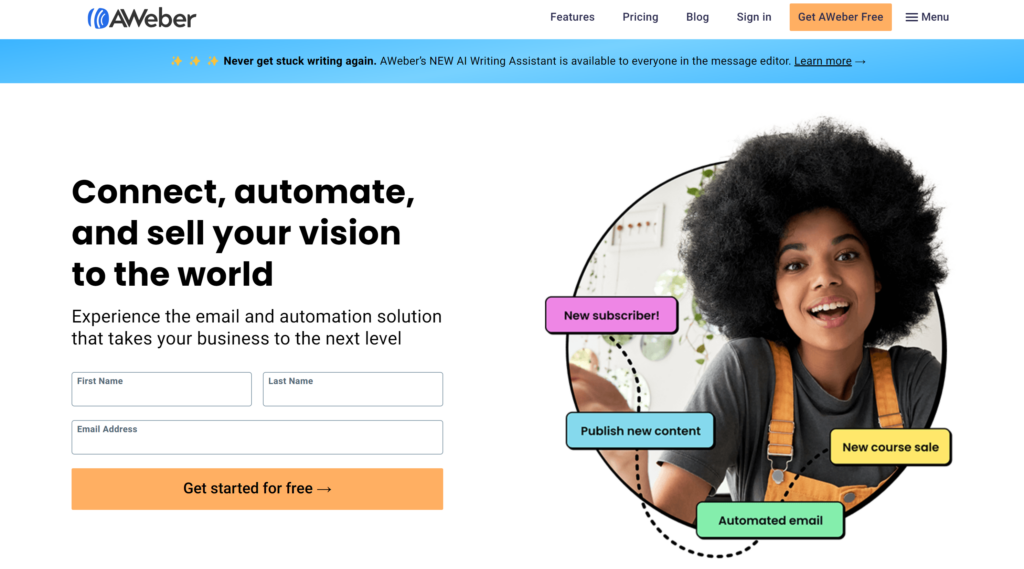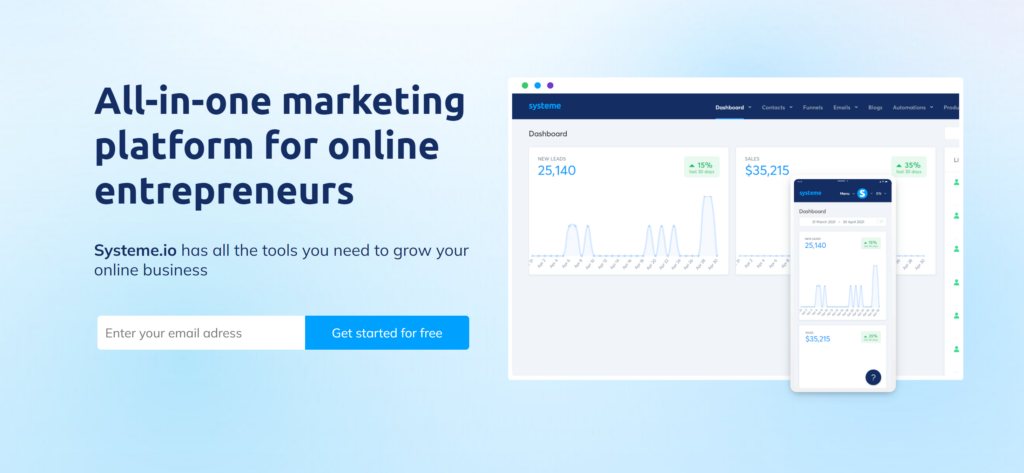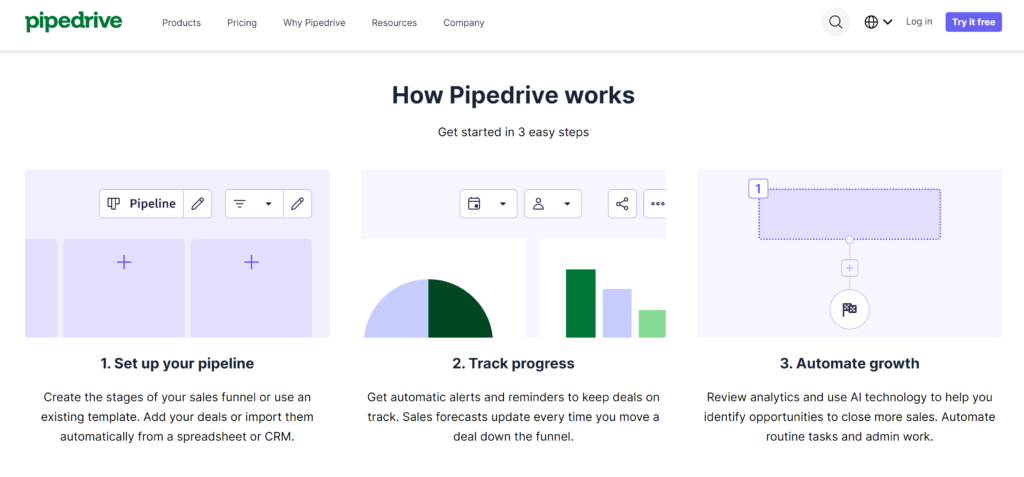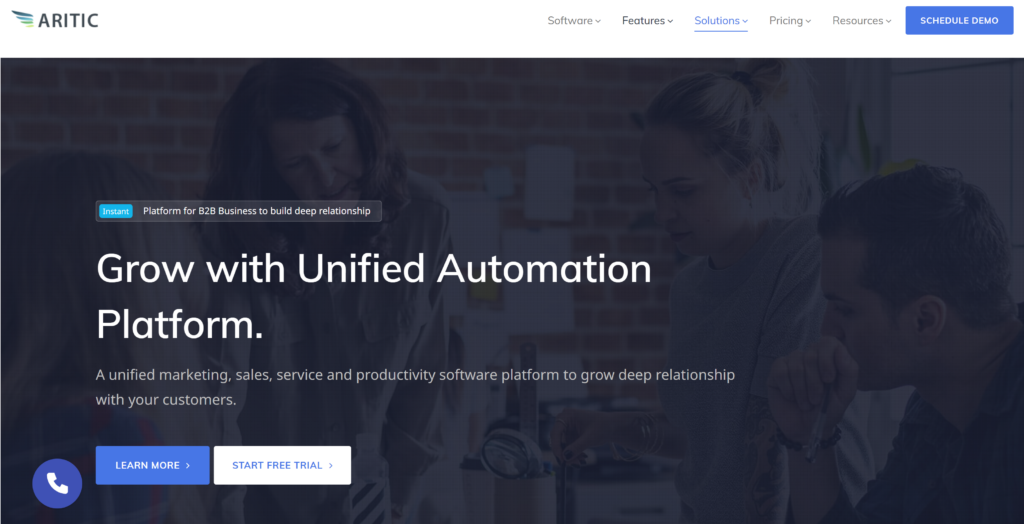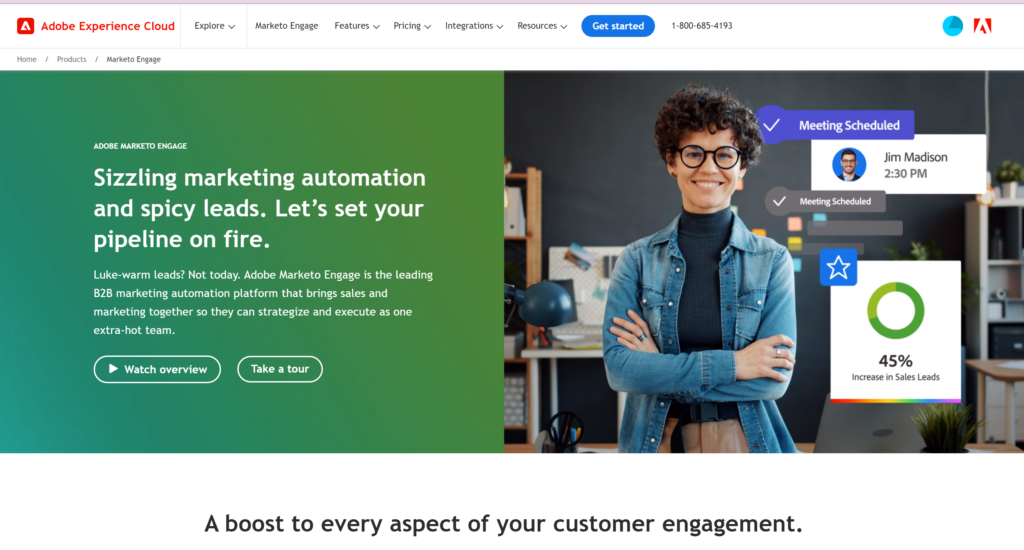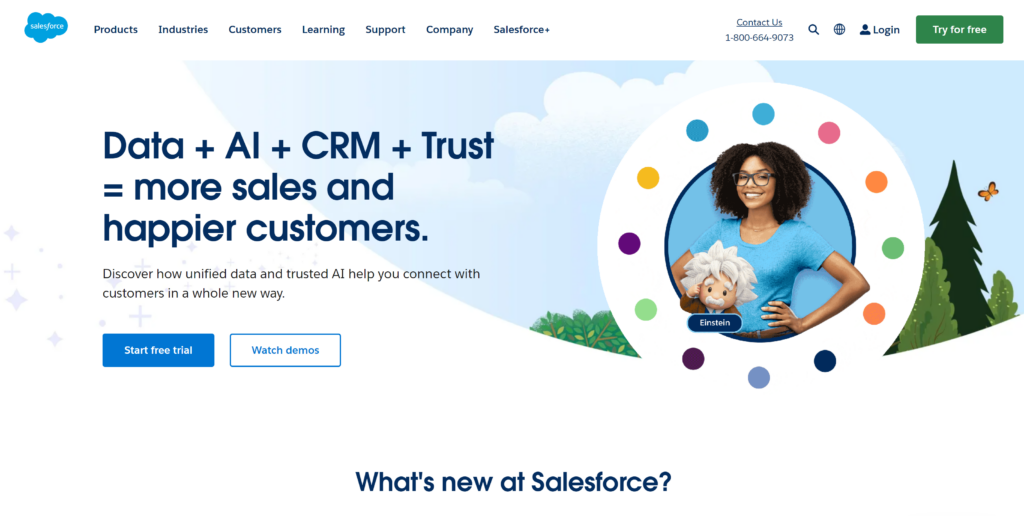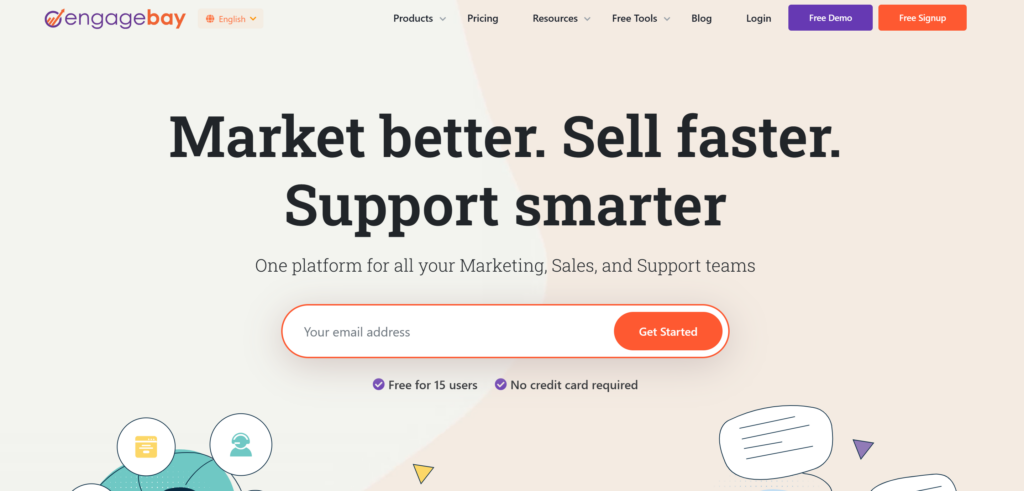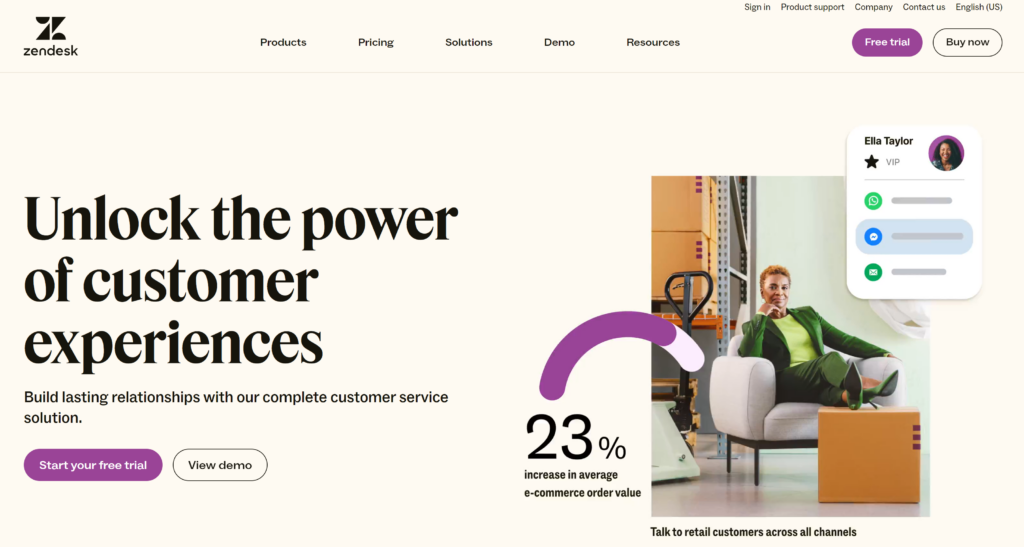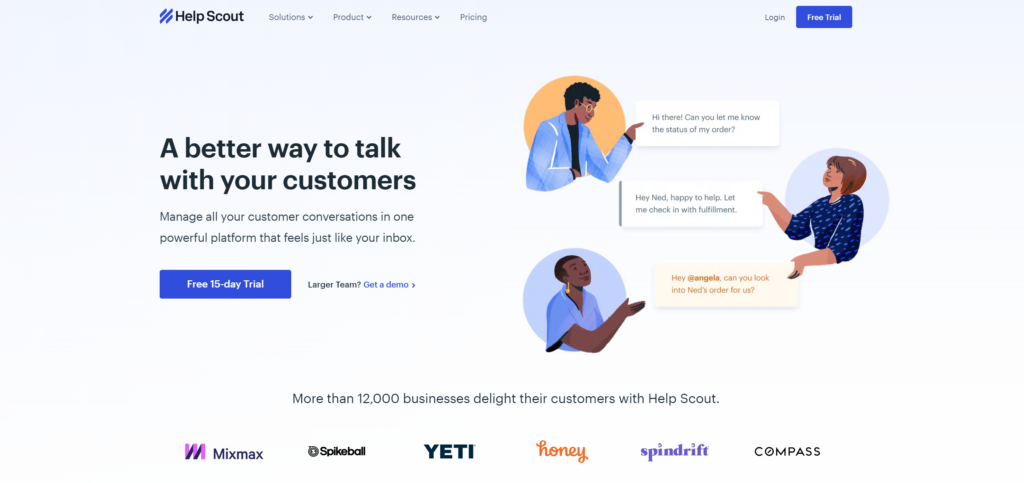By Mirza Bahic
In addition to advanced CMS tools, does this popular CRM platform provide a beginner-friendly website builder?
 If you’re in search of the best website builder to create an eye-catching website for your startup or side hustle, HubSpot website builder is certainly worth a look. In our hands-on review, we’ll dive deep into HubSpot’s offering and decide whether it’s a game-changer for solo entrepreneurs and small business owners looking to make their mark online.
If you’re in search of the best website builder to create an eye-catching website for your startup or side hustle, HubSpot website builder is certainly worth a look. In our hands-on review, we’ll dive deep into HubSpot’s offering and decide whether it’s a game-changer for solo entrepreneurs and small business owners looking to make their mark online.
After all, HubSpot is more than just one of the best free website builders – it’s the heart of HubSpot’s comprehensive content management system (CMS) suite. Whether you’re launching a side hustle or rebuilding your current site, this tool streamlines website creation. Despite a slight learning curve associated with advanced tools, HubSpot provides a powerful tool to support your online efforts.
To help you make the right choice, we’ve rolled up our sleeves and delved into the nitty-gritty of the HubSpot website builder. Our team of experts has rigorously tested this builder, creating multiple websites to assess its user interface, design flexibility, and integration with HubSpot’s ecosystem.
So, whether you’re a first-time website creator or want to level up your game, our Hubspot website builder review can serve as your roadmap to navigating this tricky tool.
IS HUBSPOT THE RIGHT WEBSITE BUILDER FOR ME?
Choosing the right site builder is crucial for the success of your online presence. Let’s break down who HubSpot is best for and who might find it less suitable.
Who is HubSpot best for?
HubSpot drag-and-drop website builder is an excellent choice for solo entrepreneurs entering the online realm, especially those prioritizing inbound marketing. It provides tools to create and promote content that resonates with the target audience.
Additionally, HubSpot is one of the best small business website builders on the market, allowing entrepreneurs and marketers to benefit from its all-in-one solution with strong integration capabilities. If you’re seeking a platform where your website, CRM, live chat, email marketing, and automation are interconnected, HubSpot is a solid choice. It also supports up to three languages with automatic connections between language variations.
Who might find HubSpot less suitable?
HubSpot’s pricing structure can be confusing and costs significantly increase with advanced features. If you’re on a tight budget, the leap from the entry-level plan to more advanced tiers might be limiting.
The user interface of HubSpot’s builder can also be overwhelming, which might not be suitable for those who prefer a simpler, more straightforward dashboard. In such cases, a site builder like Wix, with a more intuitive design, could be a better fit.
HubSpot website builder – perfect for CRM and marketing integrations
HubSpot’s website builder integrates with their CRM and other marketing tools. With a generous free plan, it makes HubSpot a great option for small, start up, and growing businesses.
HUBSPOT FEATURES AND TOOLS
TEMPLATES

HubSpot boasts a collection of over 170 themes, covering a diverse range of categories and you’re invited to preview themes before installation. And if that’s not enough, you can even spice things up by adding themes purchased from ThemeForest, expanding your design options.
When it comes to customization and adding a personal touch, the theme editor is your creative playground. You can easily tweak colours, fonts, and spacing to match your brand’s vibe. What’s best, these changes ripple across all your pages, saving you time and effort.
One advantage that sets HubSpot and Wix apart is HubSpot’s ability to switch themes without bidding farewell to your content – it’s really a rare gem in the website-building realm.
HUBSPOT WEBSITE EDITOR

Now, the heart of the matter – HubSpot’s drag-and-drop editor takes centre stage, offering an array of content elements and modules to elegantly populate your pages.
From dynamic galleries and testimonials to structured columns and vibrant videos, the editor is there to empower your creative choices. Tweak the finer details of your website’s appearance effortlessly, from global fonts and spacing to typography, buttons, forms, and tables, ensuring a polished and cohesive design throughout.
However, despite the decent creative potential, HubSpot’s website editor is far from being a champion of flexibility. Precise placement can sometimes feel like orchestrating a dance routine without mastering all the moves. Text editing takes a brief detour into a separate pane, introducing a slight interruption to the flow. For those meticulous about the alignment of elements like text and images, you might find yourself desiring a bit more control.
DOMAIN
HubSpot offers a free subdomain, providing a starting point for your online presence. If you’re seeking a personalized touch, HubSpot simplifies the domain registration process right within its platform. However, you don’t need to upgrade to a paid plan right away.
Unlike many other of the best free website builders, with HubSpot, you have the benefit of connecting your own domain name for free – and it offers a simple step-by-step guide to help you do it.
If you don’t own a domain, registering one usually falls in the range of $10-20, though it can vary based on factors such as popularity and the registrar you choose.
HUBSPOT ECOMMERCE

When it comes to ecommerce functionality, HubSpot CMS doesn’t provide native features for selling products. Still, the platform allows you to receive payments through your site, primarily suitable for processes like donations or simple payments, but this functionality is limited to users based in the US.
Despite this limitation, HubSpot extends its ecommerce potential through its app marketplace. Here, you’ll find plenty of free ecommerce Apps compatible with HubSpot, such as WooCommerce, BigCommerce, PrestaShop, Magento, and more.
As for transaction fees, HubSpot adopts a transparent approach with no setup fees, monthly fees, minimums, or hidden charges. The cost structure is based on a percentage of each transaction, ensuring you only pay for the service when it’s actively utilized.
The specific fees, however, depend on the payment processing option you choose within HubSpot. If you opt for HubSpot Payments, expect to incur a 2.9% charge on all credit card transactions and a 0.5% fee (capped at $10) on ACH payments. Alternatively, if you integrate your Stripe account as the payment processor, HubSpot applies a platform fee of 0.5% per transaction, alongside the processing fee agreed upon with Stripe.
HUBSPOT MARKETING INTEGRATIONS

HubSpot shines in the realm of marketing integrations, providing powerful SEO tools to boost your online presence. With features like personalized content, email marketing, and seamless integration with CRM and automation tools, HubSpot provides an all-in-one suite for managing various marketing aspects.
The platform’s Marketing Hub is aimed at experienced marketers, offering capabilities like email campaigns, SEO strategy development, ad management, automated campaigns, content uploading, and detailed reporting. This makes it an attractive choice for businesses seeking streamlined lead generation and nurturing processes.
HubSpot doesn’t stop there – it also integrates seamlessly with various social media platforms including Facebook, Twitter, and YouTube, further enhancing your ability to reach and engage with your audience.
WEBSITE SECURITY

As soon as you connect your domain, HubSpot will automatically set you up with a standard SSL certificate through Google Trust Services, giving your site a secure foundation.
Behind the scenes, HubSpot entrusts your website’s security to top-tier cloud providers like Google Cloud Platform and Amazon Web Services. These providers adhere to strict security standards like ISO 27001 and SOC 2 compliance, ensuring your website is in good hands.
HubSpot employs a web application firewall (WAF) to safeguard against attacks, including DDoS threats. Real-time monitoring keeps an eye on traffic, promptly identifying and thwarting any malicious activity.
And when it comes to data protection, HubSpot has it covered. Your information is securely replicated and backed up across multiple storage locations ensuring your data’s safety and quick recovery if needed.
To keep a pulse on your website’s security, HubSpot’s Security Health is your go-to tool. It provides a comprehensive overview of your security measures, pointing out areas for improvement. You just need to follow the links to address any concerns and strengthen your account’s security.
HUBSPOT PRICING: IS HUBSPOT GOOD VALUE FOR MONEY?

To start your journey with HubSpot, you’ll have to choose from their CMS Hub plans, each tailored to cater to specific business needs.
There’s a forever-free plan and it comes packed with essential tools for marketing, sales, service, content management, operations, and commerce. They’re perfect for small businesses looking for budget-friendly yet impactful solutions that can be simply upgraded as their business grows. However, keep in mind that this fee plan comes with certain limitations, such as up to 25 website pages, no dynamic content, and includes HubSpot branding with a non-customizable favicon.
The next in line, the Starter plan ($20/month paid yearly) is likely enough for most small-to-medium businesses, but if you crave advanced features, the Professional plan ($360/month paid yearly) offers personalization, A/B testing, custom reporting, and more.
The Enterprise plan ($1,200 /month paid yearly) goes further with advanced development-focused features such as additional root domains, memberships, adaptive testing, web apps, and custom objects – everything needed to build a robust foundation for wide-ranging business growth.
HubSpot lets you create custom bundles for your business. The four key products – HubSpot CRM (free), Marketing Hub, Sales Hub, and Service Hub – come in Free, Starter, Professional, and Enterprise plans. For an all-inclusive approach, the Growth Suite bundles them together at a discounted price.
You have the option to optimize your HubSpot experience with expert assistance, ensuring you make the most of the platform’s capabilities. To dive deeper into specifics about HubSpot’s plans and pricing, check out their pricing page.
HUBSPOT HELP AND SUPPORT

Even on the Starter plan, you’ve got the backup of both email and live chat support, and the team is quick to respond and genuinely helpful when you’re facing challenges. Also, if you’re ever curious or need quick updates, hit up HubSpot support on X (Twitter) – they even encourage their users to do so.
The knowledge base is like a gold mine, covering a ton of topics. It might seem a bit overpacked at first glance, but think of it as your go-to resource, helping you through common issues and diving into advanced features.
There’s also a community forum where you can chat with fellow users, tap into their collective wisdom, and pick up strategies to grow better with HubSpot. Plus, HubSpot keeps you in the loop with real-time updates on system status and security – just visit their status page.
However, to get round-the-clock phone support, you’ll have to go with the Professional or Enterprise plans. For a pretty penny, this will add that extra layer of assistance for a smooth website-building journey.
HUBSPOT: WHAT’S NOT INCLUDED? WHAT COULD BE BETTER?
While HubSpot CMS Hub offers an extensive array of business-focused, particularly marketing features, the platform could benefit from increased flexibility within its editor. Design flexibility is limited, requiring potential reliance on developers for precise customization, making it more akin to a comprehensive content management system like WordPress than other DIY website builders such as Wix and Squarespace.
One notable downside is the platform’s learning curve, attributed to the multitude of features available. Less tech-savvy users may find it challenging to familiarize themselves with the different interfaces and editors for various tasks. The editor’s rigidity, despite offering drag-and-drop functionality, might make it a bit challenging to customize the design exactly as you want.
Still, if you’re willing to invest time in navigating the learning curve, HubSpot website builder can be a powerful choice, particularly if you’re already using HubSpot’s CRM or marketing tools.
HUBSPOT REVIEW: FINAL THOUGHTS
In summary, HubSpot’s website builder comes as a compelling all-in-one solution, especially when integrated with HubSpot’s CRM or email marketing tools. It might not be the most beginner-friendly choice out there and isn’t as flexible as some of its competitors, even free website builders. Nevertheless, HubSpot is a marketing powerhouse that excels with robust tools for SEO, blogging, and lead generation.
If you’ve decided on HubSpot but are looking for superior customization or lack the time to navigate the learning curve, consider collaborating with a developer. When understood and utilized effectively, this comprehensive solution can empower your online presence and marketing endeavours.
The bottom line is, if you are a small or growing business that wants an all-in solution for CRM, marketing tools, and website building, there is little out there that can beat HubSpot’s offering. However, if you want more flexibility in your website design, assessing other options will be worthwhile.
HUBSPOT WEBSITE BUILDER FAQS
Is HubSpot really free?
Is it hard to learn HubSpot?
Is HubSpot good for SEO?
By Mirza Bahic
Mirza Bahic is a freelance tech journalist and blogger from Sarajevo, Bosnia and Herzegovina. For the past four years, Mirza has been ghostwriting for a number of tech start-ups from various industries, including cloud, retail and B2B technology.
- Owain WilliamsB2B Editor, Website Builders


